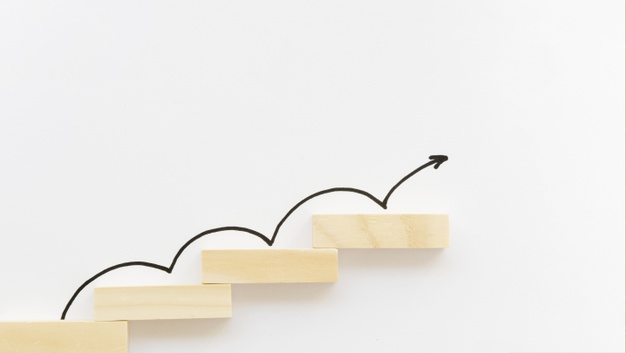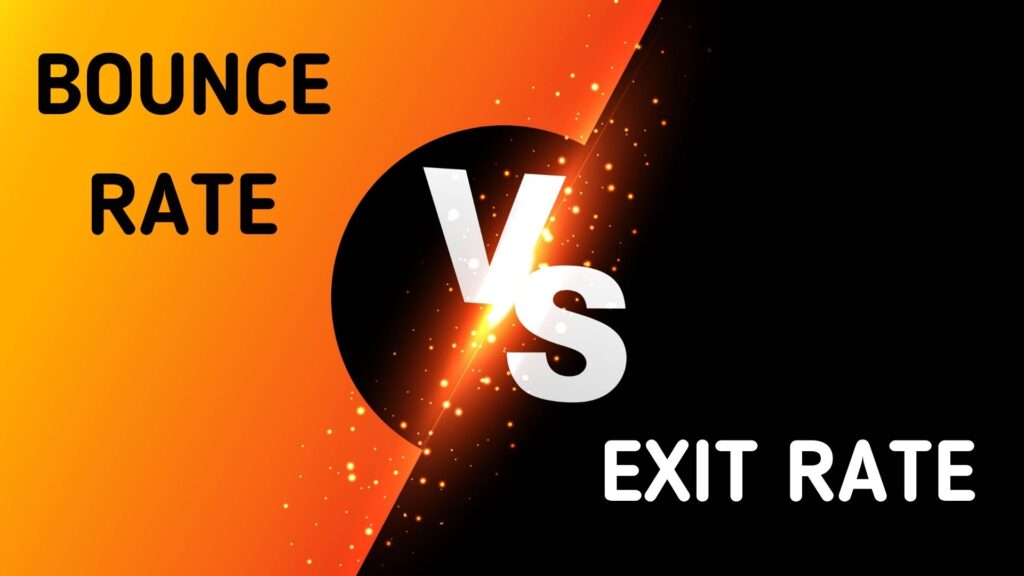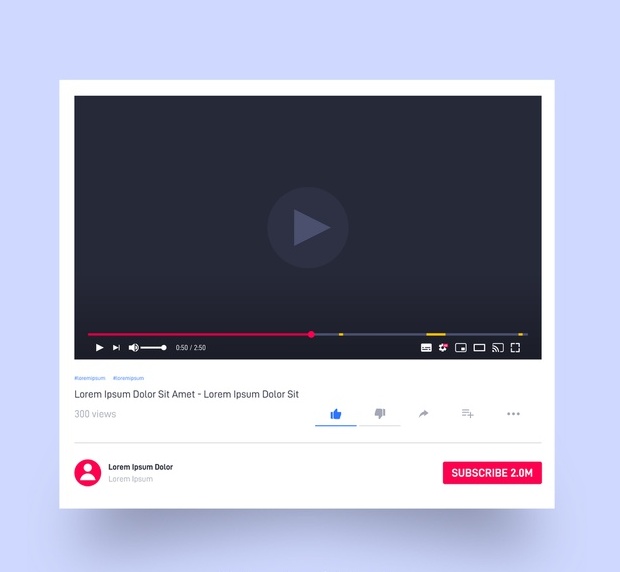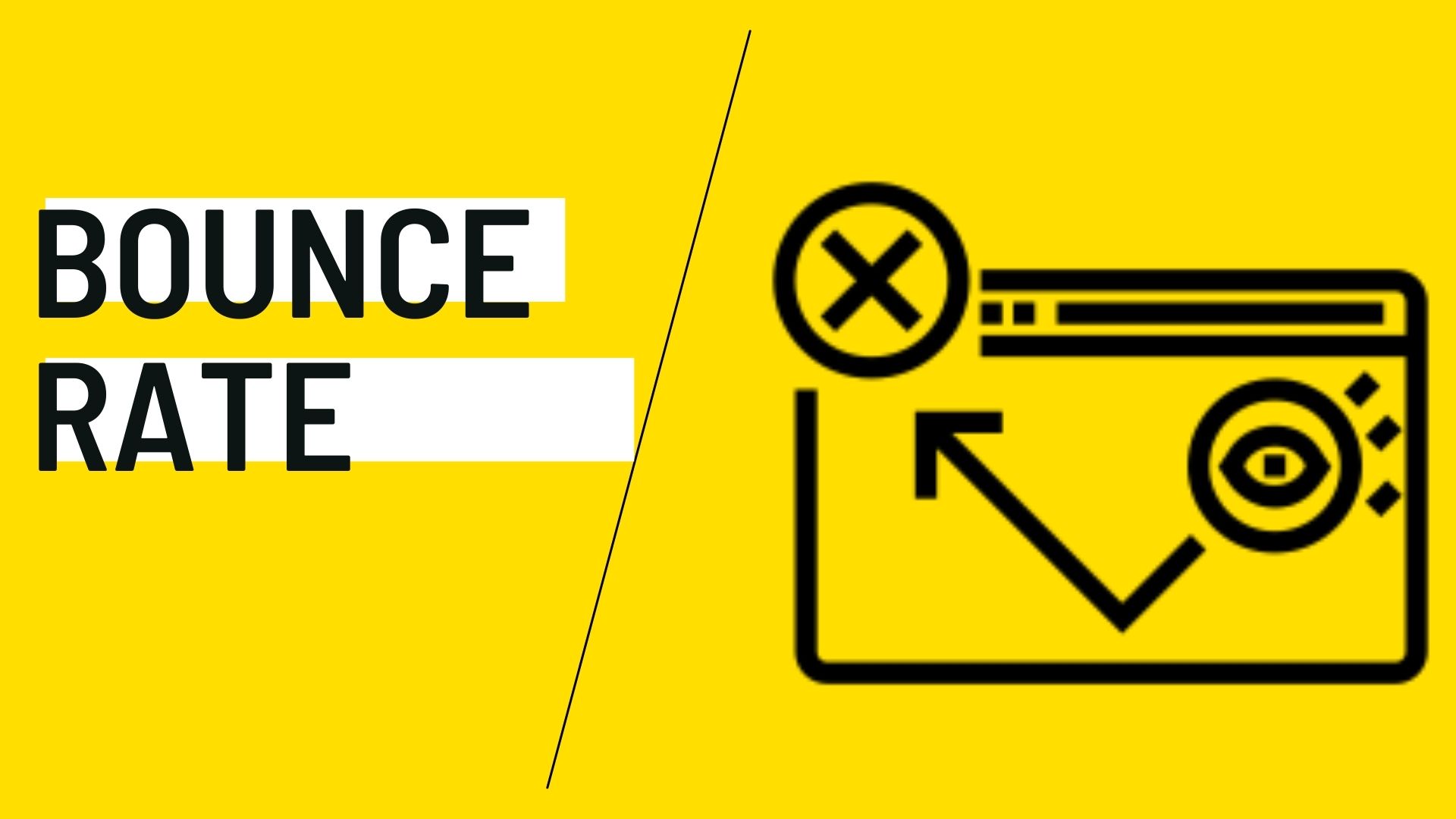Bounce Rate is understood as the percentage of visitors who visit a landing page on your site and leave it without performing any action like filling a form, clicking on a link, browsing, or purchasing a product.
The google analytics bounce rate is single-page sessions divided by all the page sessions. It can also be defined as the percentage of all the different sessions on a site in which users just viewed a single page. In this, the site visitor triggers only a single request to the analytics server.
What is Bounce Rate?
A bounce rate is a term used in online marketing, and it calculates the rate at which viewers land on a website and then leave without taking the call to action, such as making a purchase, signing up, or filling a form.
This means that visitors only view the page they clicked on and then left; hence they “bounce”. It helps determine the efficacy of a website’s entry page in increasing conversion rates.
Is High Bounce Rate a Bad Thing?
Generally, a high bounce rate is not a good thing, but it also depends upon the requirement of a site. For instance, if a site’s success is associated with the users who view more than one page on a site then a high bounce rate is bad. Like, if the home page of a site is there only as a gateway to other pages of your site, then you would never like to have a high bounce rate.
But, if you own a single-page site like blog posts or other sorts of content that needs a single-page session then it will be perfectly normal if your bounce rate is high.
Google Analytics Bounce Rate Formula
There is a simple formula to calculate a website’s bounce rate
Bounce rate= Total number of visitors bouncing /Total visitors viewing that page
This way, a bounce rate can be calculated to assess the effectiveness of an entry page. Bounce rates can range from 20 to 90%. An average bounce rate depends on the type of website one refers to, such as dictionary sites are expected to have a high bounce rate as people only read meanings and exits. But for an e-commerce website, a bounce rate of more than 45% is a bad sign.
Hence, it is best to compare bounce rates with similar websites to learn the average bounce rate one can expect. Generally, anything more than 50% is regarded as a high bounce rate and should be followed with corrective steps.
What is the Average Bounce Rate?

As per the report of GoRocketFuel.com, the average range is between 41 and 51%.
Ecommerce sites have the lowest avg bounce rate which is 20-45% while, B2B has 25-55%, Lead Generation has 30-55%, Non-Ecommerce Content has 35-60%, Landing Page 60-90%, and Dictionaries, Blogs and Portals have 65 to 90% avg bounce rates.
What is a Good Bounce Rate?
A good bounce rate for a site is considered below 40%.
While, if it is in between 40% and 55% then it can be considered okay. But, if the bounce rate of a site is in the range of 55-65% then you should improve your bounce rate.
Even in some of the cases, if the bounce rate is more than 90% or below 20% then it generally shows a tracking or code installation error.
Purpose of calculating Rate Bounce
Bounce rates are significant percentages that reply helpful data in developing engaging content in websites. Some of the reasons for using it to check-
1. Effectiveness in increasing Calls to Action & Conversion Rate
A bounce rate is indicative of the conversion rates that a website or entry page is generating for the company. A high bounce rate shows the website’s inefficiency in carrying out the conversion of viewers into customers. Hence, conversion rates can be boosted by figuring out the causes of bounces and rectifying those mistakes.
2. The Search Engine value and audience overview of a website
Bounce rates also affect the ranking of websites in search engines. A low bounce rate would add to the web site’s popularity and result in a favourable ranking while a related topic is being searched on the internet. By ending up on the first page of search results, company websites share the likelihood of being accessed more and creating brand awareness. So, it becomes vital to decrease bounce rates to increase the SEO ranking of a website.
3. Website Design, User Experience, and Readability
A high bounce rate can point to something as simple as a boring website. If a page fails to interact with audiences, grabs their attention, or has a complex design that people can’t navigate through, it can lead to them opting out from venturing further into the website. In such a case, a website’s content, layout, fonts, colours, and other elements need to be revised so that bounce rates can crawl down and sales can peak.
4. To take a look at useful traffic sources and favourable sessions
Another use of bounce rates helps understand which source of content is the most profitable for a business. For example, paid promotions might have a higher bounce rate than social media ads. This data would help brands invest more money in creating traffic through the sources where visitors are more likely to stick around and take the desired action.
Difference Between Bounce Rate and Exit Rate

There can arise some confusion between the concepts of bounce rates and exit rates. While a bounce rate is the percentage of visitors who go to a page of a website and leave that page, an exit rate is the percentage of people who leave a page that may or may not be the page they initially entered the website.
A bounce, therefore, occurs while on the entry page, while exit rate accounts for visitors leaving other pages as well.
So, if visitors continually show a high exit rate for one page, that page might need to be designed again.
How to Reduce your Bounce Rate
There are plenty of reasons as to why bounce rates are high for a page. It could be because the page failed the readers in some way, the design wasn’t attractive, or people found the information they wanted and then left. While it is not possible to narrow down on these reasons without a complex survey, there are a few simple ways to avoid sky-high bounce rates:
1. Fast loading speed
People often don’t even let a page open on their browsers if it takes too long to load. A slow-loading page relates to high bounce rates. It’s best not to test the patience of intent users and speed up your website’s loading.
2. Make engaging content
Because one is never guaranteed what type of content a visitor would like to see, it’s an excellent bet to include different content formats to a page to communicate a call to action, especially videos. They are highly engaging formats that result in low bounce rates.
3. Tailor pages to fulfil search intent
In case a user searched for cleaning services and your content strategy landed them on your page, which talks about a clean environment, they will leave the page and raise your website’s bounce rate. It is helpful for a page to satisfy or answer users’ needs while searching for products or services. Pages can also sprinkle some helpful information right at the top rather than towards the end to keep readers interested.
4. Add internal links to other pages for more engagement
Adding links to not only other pages to your website but also to other resources cited in the content can help boost your content’s visibility and help readers gain more knowledge. They will learn to value your content more due to the various links to other websites in it.
5. Have a single and clear CTA
While designing your site, you need to be clear about what specific action you want users to take when they go through the content you’re offering. Accordingly, you may a clear Call to Action to prompt your site visitors to take favourable action.
Easy Hacks to Improve Bounce Rate

In addition to the aforementioned tips, you may also try some easy and effective hacks to improve the rate of bounce of your site. Let us go through some of those hacks here and now-
- Embed YouTube Videos On Your Page
- Use The PPT Introduction Template
- Make Your Content Super Easy to Read
- Use Heatmap Data to Improve Key Landing Pages
- Impress Visitors With Amazing Design
- Use a Table of Contents
- Optimize for Mobile devices
- Use Sidebar Widgets and Promotions Sparingly
Conclusion
Therefore, a bounce rate is a measure of a website’s “stickiness” to a potential customer.
If not to boost conversion rates, a bounce rate is a powerful tool to help create compelling content marketing strategies and make websites that keep readers wanting more.
You can do an AB test of different versions of site/landing pages to check which page offers the optimized bounce rate for you.
How important do you consider measuring bounce rate to optimize the performance of a site? Share your views with us in the comments.
Pinky is an MBA in Marketing from the University of Mumbai. She loves helping people out in learning Marketing and sharing latest ideas and tactics for growing businesses.
